Experienced summer residents know that the later the seeds are sown, the more actively the seedlings develop, the stockier and healthier they are.
|
But there are crops that are still planted in February. These are early varieties of cabbage (white cabbage, cauliflower, broccoli, etc.). |
Cabbage seedlings are planted in February
Early planting is due to several reasons.
- Firstly, cabbage is a cold-resistant plant, and we plant it in the beds, as a rule, in mid-April, much earlier than tomatoes, peppers, and eggplants.
- Secondly, spring weather for the development of cabbage is more favorable than summer, and therefore February sowing allows you to get not only an earlier, but also a better harvest.
We sow cabbage seeds for seedlings in mid-late February. We sow lightly to provide the seedlings with good light and ventilation from the first days. The temperature should be low and the lighting should be good. Without this you cannot get good cabbage seedlings.
The planting depth of cabbage seeds is about 1.5 cm. The optimal temperature immediately after germination is +8 +10 degrees. Later it is increased to 15-17 degrees. At night, naturally, it should be much cooler - 7-9 degrees.
In an apartment, such a microclimate can be created by separating the window from the room with plastic film. On sunny days, seedlings can be placed on a glassed-in loggia.
Onions are also planted in February
It is also advisable to plant onions in mid-February, so that in April, when it is not yet hot, you can plant seedlings in the garden and get a harvest as early as possible. Onion seeds that are not prepared for planting can lie in the ground for a long time, so it is better to soak and germinate them before sowing.
First, fill them with a small amount of a slightly pink solution of potassium permanganate for a day, and then let them swell in a damp cloth at room temperature. We immediately sow the sprouted seeds, planting them to a depth of 1-1.5 cm.
We do not sow thickly: both in order to save seeds, and for better ventilation and convenient replanting. For seedlings, we lower the temperature to +10 +11 degrees for several days, and even later we try to keep the onions cool - +15 degrees.
In February, leeks, root and stalk celery are sown, but for a different reason. These crops have a rather long growing season and, being sown directly into the ground, they will not have time to form a full-fledged harvest.
Planting celery seedlings
Celery seeds, like onion seeds, are difficult to germinate, so before sowing, it is also advisable to germinate them by keeping them in a damp cloth for several days. Seeds that begin to hatch can be placed in the refrigerator for ten days (for hardening), and then sown immediately.
Sow celery seeds on the surface of moist soil (they can be lightly sprinkled with clean sand) and cover with film until germination to provide favorable conditions for germination. The optimal temperature for the pre-emergence period is 20-25 degrees.
After germination, we reduce the temperature to 14-18 degrees. We water the celery seedlings very carefully: either along the edge of the seedling container, or from a pipette.
We sow parsley seeds in several cassettes. In recent years, this crop somehow does not tolerate our winters well, and in the spring we find ourselves without fragrant leaves. And by growing a little parsley seedlings, we will eliminate this problem.
A small note: we do not soak the seeds treated by the company before sowing.
We will sow the remaining vegetables not in February, but later: peppers, eggplants, lettuce - in mid-March, tomatoes - in late March-early April, cucumbers, zucchini, squash - no earlier than mid-April. If there is a greenhouse at the dacha, then we sow seeds for seedlings for them two weeks earlier than the dates mentioned above.
And one more small clarification: we do not try to sow all the tomato seeds at home. We will leave some to sow at the dacha in a greenhouse, greenhouse, and later - in open ground.
Soil: steam or leave it like that?
Since we decided not to rush into planting seeds for seedlings, we have time to properly prepare soil mixtures and seedling containers.
What should the soil mixtures be like?
It is better not to experiment with mixtures. If we get good seedlings on purchased nutrient soil, we will purchase one that has not let us down in previous years. If we are accustomed to growing seedlings on a mixture of leaf soil, peat, sand, we will also not deviate from tradition.
The main thing is that the soil mixture is light and structural. This soil promotes the development of strong roots in seedling plants. If you don’t have any leaf or turf soil, you can mix garden soil with peat (1:1).
Perlite and vermiculite added to it improve the properties of the soil mixture well. Summer residents who are not always able to water their seedlings on time add hydrogel to the soil mixture, which helps maintain humidity at an optimal level.
How to disinfect soil for seedlings
From year to year, gardeners are advised to steam the soil for seedlings to get rid of pathogens. But high temperature, making the soil sterile, deprives it of life. It is difficult for plants to grow on such a substrate.
Therefore, if we still do not refuse to steam the mixture, after this procedure we will “populate” it with soil microorganisms by spilling it with a solution of Fitosporin-M.
You can do without steaming, especially if the soil has been frozen. We bring the soil that is stored on the balcony or in the garage into a warm place at least two weeks before sowing. It will warm up, and beneficial microflora will be activated in it.
Seed treatment before planting
Well, so that the seedlings are not “attacked” by diseases, we will strengthen them by treating the seeds and seedlings with growth regulators.Which regulator do you prefer? Zircon has proven itself well. The only warning: strictly adhere to the dosage indicated in the instructions.
In the case of zircon, “it’s better to underdig than to overdig.” Vegetable seeds are soaked for 8 hours (1 drop of zircon per 1.5 cups of water). Possessing fungicidal, anti-stress, stimulating effects, zircon makes it possible to obtain viable seedlings with a powerful root system.
Other regulators are also used for pre-sowing soaking of seeds: epin-extra (1 drop per 0.5 cup of water, soaking for 6 hours), sprout (10 drops per 0.5 cup of water, soaking for 1 hour), amulet (1 drop per 100 ml of water, soaking for 1 hour), immunocytophyte (1 tablet per 10-15 ml of water, soaking for 2-3 hours).
Do not plant seedlings densely
Now you need to select seedling containers. You can plant it the old fashioned way - in boxes, so that at the stage of 1-2 true leaves, seedlings can be planted in separate cups or in the same boxes, but more rarely.
For early planting, it is better to use wooden boxes. Having reduced thermal conductivity, they will prevent the soil from cooling too much at night and on cloudy days.
Do not forget that in February and March frosts outside the window are a common occurrence. Seedling boxes should not be deep: a height of 10 cm is quite enough. It is difficult to plant seedlings growing in deep containers without disturbing the root system.
Why are cassettes good?
Those who have switched to a more convenient cassette method of growing seedlings can sow seeds a week later. Seedlings from cassettes are transplanted into larger containers painlessly and almost immediately begin to grow in a new place.
And this is a gain in time.If the cassettes are small, you shouldn’t delay transplanting plants into larger cassettes or cups; you shouldn’t wait for the roots in the cassettes to “twine into a ball.” Plants forced to live in cramped conditions at an early age do not program themselves for high yields.
Cassette sowing is also good because it allows you to sort the cassettes at the moment of emergence of seedlings. From the cassettes with emerging shoots, grouping them in one side of the cassette, you can remove the film, and continue to cover the rest, protecting the top layer of soil from drying out.
Such “rearrangements” help to avoid the seedlings being pulled out immediately after germination and make it possible for delayed seeds to sprout painlessly. When planting in boxes, we are forced to immediately remove the film after the first shoots appear, thereby worsening the germination conditions for the remaining seeds.
If we do not remove the film from the seedling box, the seedlings that emerged first become very elongated. The sword, as they say, is double-edged.
Why do seedlings stretch out?
For many summer residents, despite all efforts, the seedlings become very elongated in February. And this is facilitated not only by a lack of light, but also by too high a temperature in the room, excessive watering, and fertilizing.
Therefore, if we notice that our seedlings do not have enough light, we find them a cooler place and reduce watering. In cool rooms, seedlings do not grow vigorously, but they are stronger and more hardened. And moderate watering stimulates the development of a powerful root system.
Another very simple technique that can help prevent excessive stretching of seedlings is daily light touching of the seedlings.
This reaction of plants to our tender attitude towards it is explained very simply: leaves, when physically exposed to them, release ethylene, which regulates plant growth. In small quantities, this gas makes plants stockier.
Continuation of the topic:
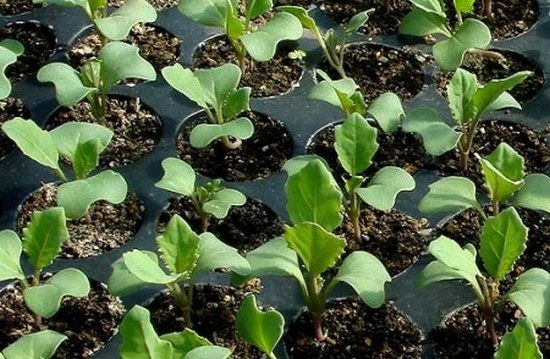
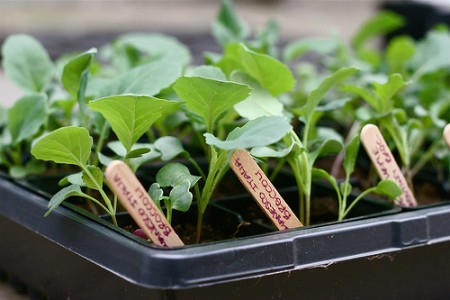
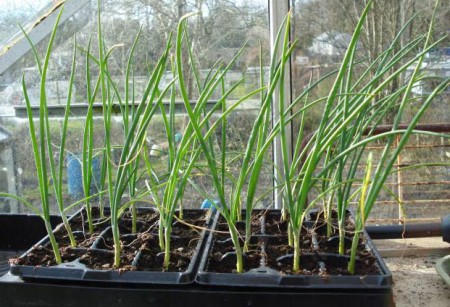
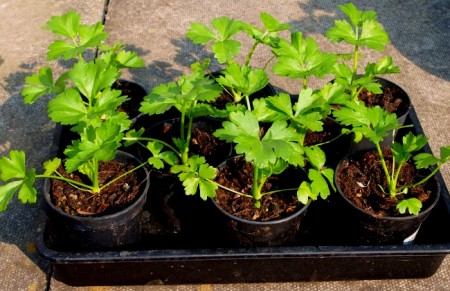
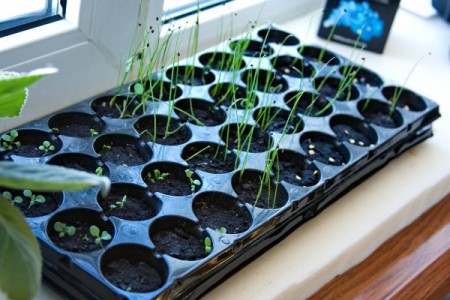

 (15 ratings, average: 4,53 out of 5)
(15 ratings, average: 4,53 out of 5) CUCUMBERS NEVER GET SICK, I'VE BEEN USING ONLY THIS FOR 40 YEARS! I SHARE A SECRET WITH YOU, CUCUMBERS ARE LIKE THE PICTURE!
CUCUMBERS NEVER GET SICK, I'VE BEEN USING ONLY THIS FOR 40 YEARS! I SHARE A SECRET WITH YOU, CUCUMBERS ARE LIKE THE PICTURE! You can dig a bucket of potatoes from each bush. Do you think these are fairy tales? Watch the video
You can dig a bucket of potatoes from each bush. Do you think these are fairy tales? Watch the video
 How our fellow gardeners work in Korea. There is a lot to learn and just fun to watch.
How our fellow gardeners work in Korea. There is a lot to learn and just fun to watch. Eye trainer. The author claims that with daily viewing, vision is restored. They don't charge money for views.
Eye trainer. The author claims that with daily viewing, vision is restored. They don't charge money for views. A 3-ingredient cake recipe in 30 minutes is better than Napoleon. Simple and very tasty.
A 3-ingredient cake recipe in 30 minutes is better than Napoleon. Simple and very tasty. Therapeutic exercises for cervical osteochondrosis. A complete set of exercises.
Therapeutic exercises for cervical osteochondrosis. A complete set of exercises. Which indoor plants match your zodiac sign?
Which indoor plants match your zodiac sign? What about them? Excursion to German dachas.
What about them? Excursion to German dachas.
Thanks for the info. Tell me, please, are there chemicals that prevent seedlings from stretching?
There is "Athlete", but personally I don't like it. The best remedy is good lighting, moderate temperature and unthickened plantings.